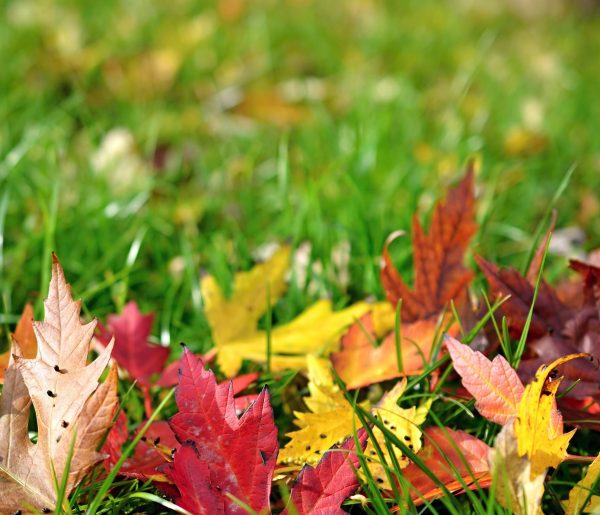- Lawn Turf
- Artificial
- Soil
- Timber
- Composite Decking
- Paving & Stone
Get In Touch With Our Experts Today!
Give us a Call! - Seed & Fertiliser
- Dressing
- Bark

September 04, 2024
There is always a misconception about what season and what time during the year is best to lay turf. Realistically, you can lay turf any time of the year in the UK. If you’re looking for an exact date, early spring or mid-autumn are usually the perfect seasons. This is due to the ideal weather and soil conditions.
Spring and autumn are the ideal seasons for laying turf because the milder temperatures and consistent rainfall create the perfect environment for grass to thrive. During these periods, your turf has ample opportunity to bed in, allowing the roots to penetrate deeply into the soil and establish a strong, healthy root system.
Autumn is possibly the best time of year to lay turf. The temperature has often dropped by now, and rain is starting to fall (saving you the task of watering!). Dew has also begun appearing in the mornings, which adds extra hydration to your soil and new grass.
As long as an early frost hasn’t arrived, you should be good to go. What we love about turf laying in Autumn is that it gives your turf plenty of time to establish before the cold months arrive. Turfing a garden in Autumn allows for a healthy root and stem system ready to flourish in springtime.
It’s all about transition, moderation and balance in weather. The cooler temperatures and balance in sun and rain make it ideal for laying turf. During the summer, the warmth of the soil encourages root growth and laying turf in the autumn benefits from these favorable conditions, allowing it to develop a robust root system before the winter frost sets in.
In the summer months, particularly in late June, July and August, we often get a sustained period of no rain and scorching hot sun which is far from ideal for lawn turfing Autumn rain aids soil moisture retention and gives your turf the ideal amount of moisture and rain to help the grass grow.
Moderate autumn temperatures help promote healthy turf growth. The scorching summer heat can place undue stress on new turf, while winter’s freezing temperatures make the ground solid and virtually impossible to lay turf on. However, autumn’s mild climate offers an ideal setting for new turf, fostering strong, healthy growth and giving roots the chance to establish themselves before the onset of winter.
Another key component is the soil. Usually at the start of September, if you haven’t watered your turf, it’s often brown and your soil is rock hard. Come winter, the ground is wet, muddy and difficult to work with. September is probably the ideal month to lay turf, it’s softer, the soil is more manageable, and the conditions are much more favourable for turf laying.
On average, new turf takes two weeks for a shallow root to be established. We still recommend leaving your turf at this point. It can take up to 6 weeks for a strong root system to be created, which will help your turf grow strong and source essential water and nutrients throughout the year.
To test if your turf is fully established, give the edge a little tug. If it pulls away from the earth, it requires more time. If there’s resistance, it’s secure. At this point, you can mow your new turf at a high mowing setting, gradually lowering the setting with each cut.
There are only three occasions when you shouldn’t lay turf. It can occur any time of the year (especially with the UK’s weather!).
First, if your ground is frozen solid. These conditions are completely impractical. Frozen soil is incredibly hard to prepare. It makes the manual side of turf laying more difficult, but new turf will also struggle to anchor into the ground successfully.
Second, torrential rain! No one wants to be outside in the rain anyway. However, if the ground you’re working on is sodden, your turf won’t take to it. You also run the risk of uneven surfaces and compacted soil, as your footprints will easily leave indentations. Lastly, laying turf on wet earth is a messy job, leaving your turf looking muddy rather than marvelous.
Third, if your soil is too dry. This can sometimes occur during extreme summers and heatwaves and adds another layer of complexity to laying turf. For successful turf laying, you need your soil to be damp; it’s easier to work with and for turf roots to embed. If you’ve ordered turf and there’s an unexpected heatwave, speak to the team at George Davies about delaying your order or placing it in our chiller to maintain its freshness.
Now you know the best time of year to lay turf, head to our ultimate guide to laying turf. Our step-by-step instructions will help you from start to finish get that top quality turf you’ve always wanted.
If you have any questions regarding your turf order, delivery or our quality turf, contact George Davies. Our turf experts are ready to help.